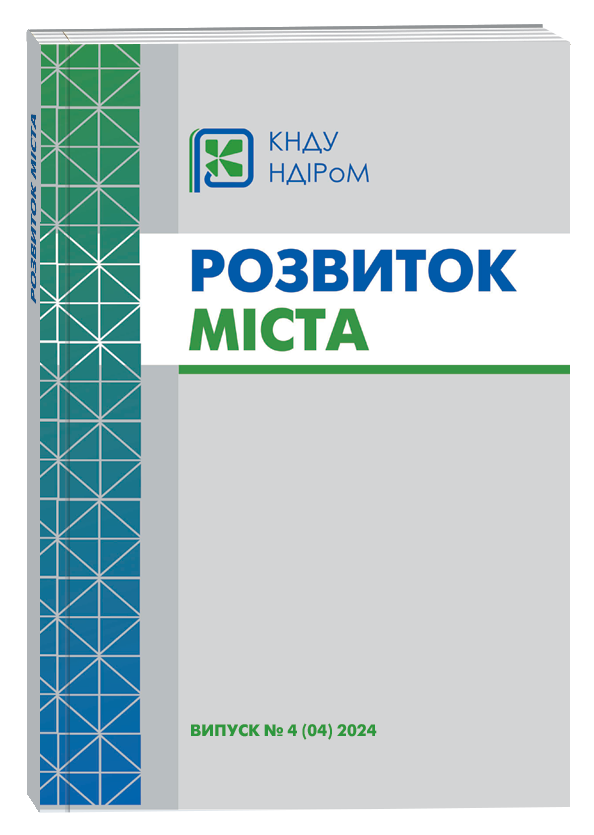ANALYSIS OF PRACTICAL EXPERIENCE OF STATE MANAGEMENT OF THE PASSENGER TRANSPORT SYSTEM IN THE AGGLOMERATION
DOI:
https://doi.org/10.32782/city-development.2024.4-1Keywords:
agglomeration, public administration, passenger transport systemAbstract
It has been established that suburban, regional and intercity transportation can be carried out by one carrier or by different carriers that are part of the holding, as well as by independent (independent) carriers. However, in all cases, to one degree or another, transportation is integrated with each other (in the latter case, integration is ensured due to the presence of external coordinating bodies - transport unions, associations, etc.). It has been determined that the principles of customer-oriented integration are that trains of different connections complement each other as much as possible. Usually, at hub stations, the departure (arrival) time of regional trains is coordinated with the passage time of intercity (international) trains in such a way as to ensure the possibility of passenger transfers between trains of different types of connections. This concept makes it possible to significantly increase the accessibility of rail transport. For the convenience of passengers, unified information systems are being created that allow obtaining the most complete information about possible options for traveling along a multimodal (intermodal) route. It is determined. the current trend, which can be observed today not only in Germany, but also in the global railway industry as a whole, is the active development of the intercity bus business by large railway companies. Companies involved in this business have very practical goals: creating an effective service that ensures the influx of passengers to rail transport by providing transport accessibility to regions with limited railway infrastructure ("last mile"); minimizing the outflow of passengers from rail transport to bus transport, which are attracted by lower fares and flexible schedules; generating profit from a business segment adjacent to passenger rail transport and creating an additional source of income for the railway station business. Another feature of suburban passenger flows, on which the formation of the transport system of the urban agglomeration should be based, is their temporal unevenness: by season of the year, by day of the week, by time of day. This unevenness is related to the purpose of passengers' trips. The following conclusions were made about passenger flows of urban agglomerations, which should be taken into account in the state management of the passenger transport system in the agglomeration: passenger flows of the urban agglomeration are uneven in space and time, and they are characterized by the features of both suburban and urban passenger flows; passenger flows of urban agglomerations are heterogeneous in their structure and should be considered in terms of component segments, while the needs of some segments can be taken into account only when drawing up the traffic schedule, and others - also when choosing service classes; when making intra-agglomeration trips, the majority of passengers use more than one mode of transport and make about 1–3 transfers; A significant portion of passenger trips in urban agglomerations are tightly tied to the time of the trip, which is the purpose of the trip. These are mainly trips to work and study.
References
Дмитрієва О.І. Методичний підхід до оцінки ефективності функціонування підприємств транспортної інфраструктури. Економіка транспортного комплексу. 2020. Вип. 35. С. 122–142.
Токмакова І.В., Хомотюк О.В., Новіков Р.О. Стратегічні орієнтири інноваційного розвитку залізничного транспорту. Вісник економіки транспорту і промисловості. 2016. № 55. С. 73–79.
Голубка С.М., Овчар П.А. Механізми регулювання автотранспортом у системі національного господарства. Економічна наука. 2018. № 9. С. 4–10.
Dmitrieva O. I. (2020). Methodological approach to assessing the efficiency of the functioning of transport infrastructure enterprises. Ekonomika transportnoho kompleksu. vol. 35. pp. 122–142.
Tokmakova I. V., Khomotyuk O. V., Novikov R. O. (2016). Strategic guidelines for the innovative development of railway transport. Visnyk ekonomiky transportu i promyslovosti. vol. 55. pp. 73–79.
Golubka S. M., Ovchar P. A. (2018). Mechanisms of vehicle regulation in the system of the national economy. Ekonomichna nauka. vol. 9. pp. 4–10.



